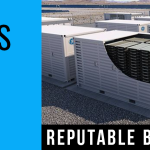
Implementing a microgrid requires significant time, effort and investment. There are many cost variables that must be considered when evaluating a microgrid investment which requires significant upfront capital. These variables include capital costs, operating and maintenance costs, utility (electric and gas) rates, interconnection costs, environmental standards, energy load requirements corrected for local weather conditions, and regulatory requirements.
In the last of three microgrid development phases, the project team is entering the project execution phase to develop deliverables or tasks that will be tied to the actual microgrid construction project.
Feasibility studies
The primary purpose of the feasibility study is to determine requirements and estimate the size of the system (e.g. site requirements, load requirements, DER requirements, objectives, drivers, etc.) and provide a cost/benefit analysis that considers multiple options within a specified degree of accuracy. In contrast, the preliminary feasibility studies conducted earlier provide basic information on whether a microgrid is needed or even feasible based on the site and customer load. The feasibility study should consider and assess several microgrid design options that reveal the trade-offs between economic, environmental, and engineering optimality.
Conceptual design phase
The purpose of this analysis is to conduct deeper analysis to confirm if microgrids are a viable option, both financially and technically at your facility. This will include analysis on controls/communication, and system and regulatory requirements.
The conceptual design will provide more detail on the microgrid components, as well as tactical and installation applications. Conceptual designs are typically performed by design and build engineering firms. This work includes site descriptions, microgrid project objectives, design basis and rationale, as well as performance criteria. For example, this will include critical loads, services and power outage considerations, and step-by-step instructions on the microgrid evaluation and analysis. The performance-based design should also leverage energy surety metrics. This phase will include exercises in evaluating, analyzing, and developing microgrid options, and estimating associated benefits and costs.
read more









